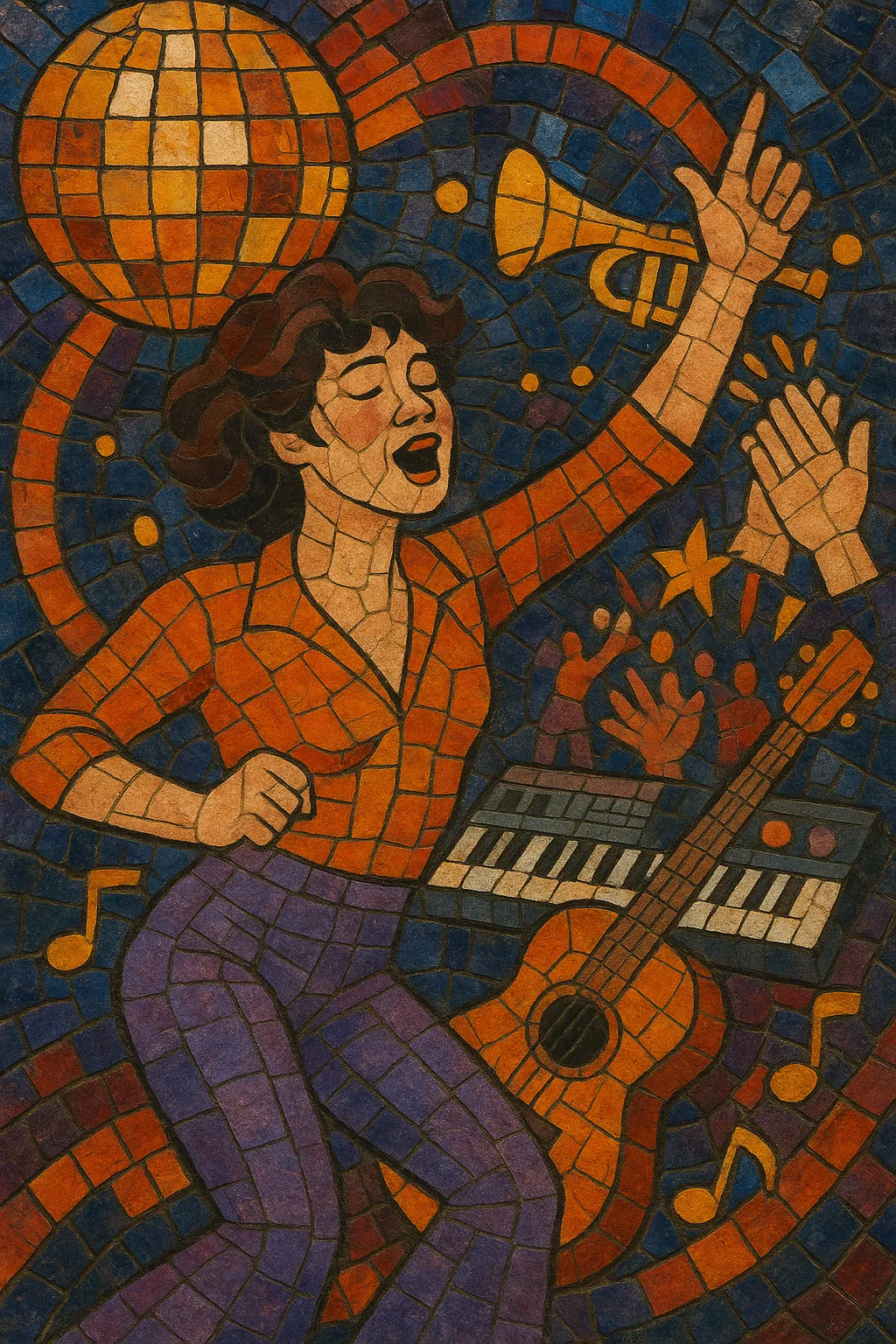
Pon-chak disco (often linked to the Korean onomatopoeia ppongjjak) is a danceable fusion of trot’s punchy two-beat feel and late‑’70s/’80s disco’s four‑on‑the‑floor pulse. It layers simple, sentimental trot melodies over drum machines, arranger-keyboard accompaniments, synth brass/strings, rhythm guitar chanks, and octave-jumping disco bass lines.
The style is exuberant yet nostalgic: buoyant handclaps and party shouts ride alongside vibrato-heavy vocals, frequent key changes, and easy-to-sing hooks. In practice it often appears in medley formats for social dancing and karaoke/tour-bus culture, where familiar songs slide into one another over a constant ppongjjak/disco groove.
South Korea’s long-running trot tradition (noted for its ppongjjak, a crisp two-beat feel) met the global disco boom at the end of the 1970s. Local showbands, club acts, and arranger-keyboard performers adapted disco drum-machine patterns and string-synth textures to trot’s melodic vocabulary, yielding a lively social-dance hybrid later nicknamed pon-chak disco.
As home karaoke, tour-bus parties, and cassette compilations flourished, performers stitched long medleys of standards and hits over nonstop ppongjjak/disco backbeats. Affordable drum machines and auto-accompaniment keyboards made the style portable and ubiquitous. Comedic ad‑libs, crowd calls, and brisk key modulations became signatures.
Producers and personalities pushed the sound into faster, punchier territory—sometimes marketed abroad as “pon-chak” or “techno-trot.” This period brought cult recognition in Japan and among crate-diggers intrigued by its maximal, party-forward aesthetic.
While K‑pop diversified, pon-chak disco’s DNA persisted in semi‑trot and dance‑trot revivals, karaoke culture, and variety‑show performances. Reissue labels, DJs, and online communities have reappraised the style’s joyous blend of disco propulsion and trot melodrama.

